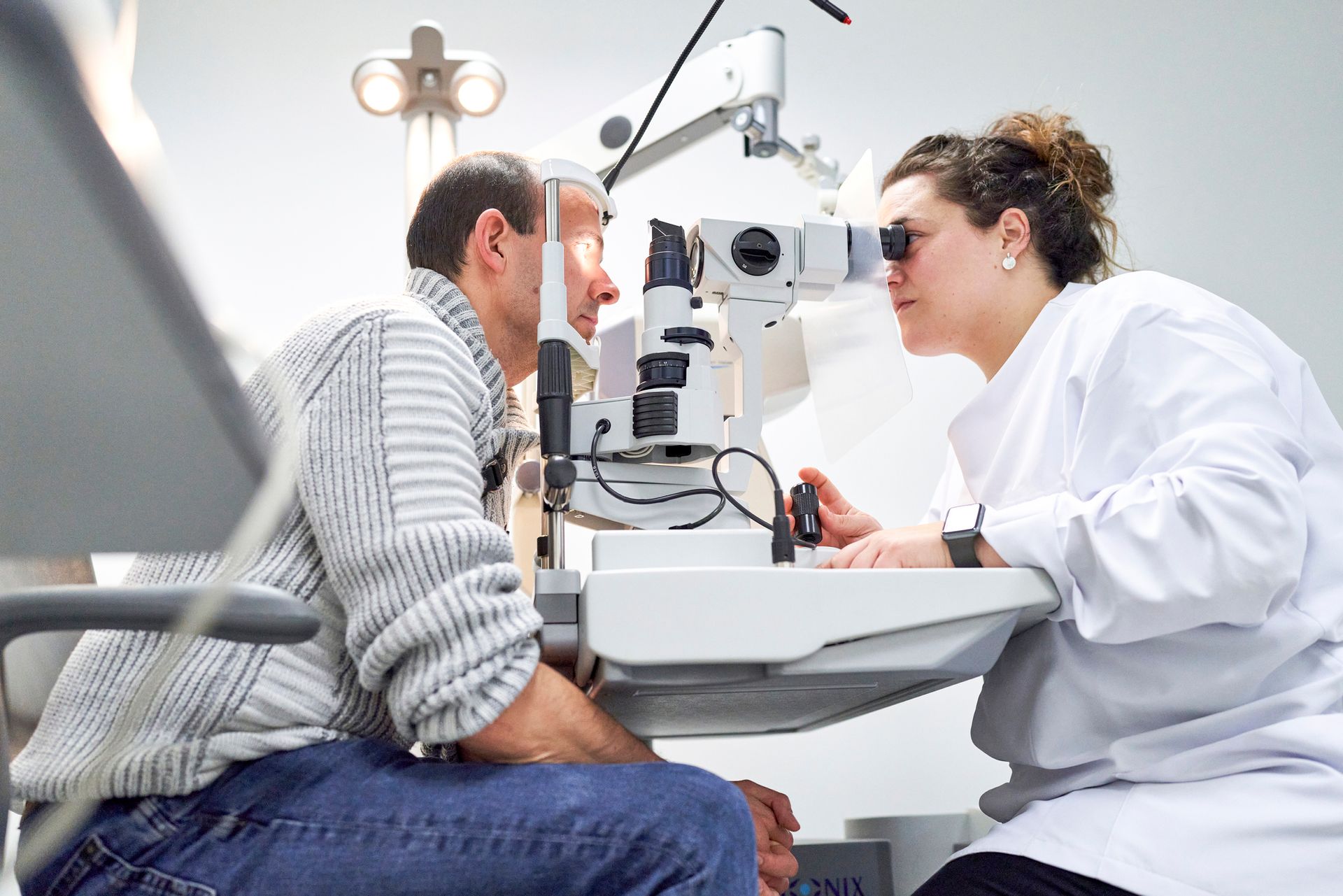Angle-Closure Glaucoma: FAQs
- By Admin
- •
- 04 Jun, 2021
- •
Glaucoma counts as a leading cause of blindness worldwide, especially in individuals aged 60 and over. This disease usually occurs when certain conditions cause the fluid pressure inside your eye to increase until the optic nerves sustain serious damage.
The two primary categories of glaucoma include open-angle and angle-closure (also called narrow-angle) glaucoma. Although either type of glaucoma can damage your vision, the latter can prove especially destructive without prompt care. Check out the answers to these frequently asked questions about narrow-angle glaucoma.How Does Angle-Closure Glaucoma Differ From Open-Angle Glaucoma?
Both open-angle glaucoma and angle-closure glaucoma can stem from drainage problems at the front of the eye. The eye produces fluid on a continuous basis, with the excess fluid escaping through a drainage angle where the iris meets the cornea. The drainage allows the eye to maintain constant, safe pressure levels.
In open-angle glaucoma (the more common form), this drainage system works, but not as well as it should, causing a mild, chronic elevation in eye pressure that gradually damages the optic nerve. In angle-closure glaucoma, the drainage angle itself gets partially or totally blocked, causing a more dramatic spike in pressure.Who Gets Angle-Closure Glaucoma?
Certain factors can increase your risk for angle-closure glaucoma. In many people, the drainage angle at the iris naturally narrows with age. Farsighted individuals naturally have a narrower drainage angle than the general population. People of Asian or Inuit heritage may also have relatively narrow drainage angles.
Angle-closure glaucoma may affect women more frequently than men, depending in part on racial factors. For instance, while African-American men and women have equal risk rates for angle-closure glaucoma, Caucasian women have three times the risk of Caucasian men.
What Symptoms Can Angle-Closure Glaucoma Cause?
Another difference between open-angle glaucoma and angle-closure glaucoma lies in the symptoms displayed. Open-angle glaucoma may cause no symptoms for many years, finally producing peripheral and then central vision loss. Angle-closure glaucoma causes more obvious and immediate symptoms.
Chronic angle-closure glaucoma may also produce minimal symptoms at first; if you suffer a total fluid blockage due to angle-closure glaucoma, you may develop a sudden blurring or loss of vision, see strange-looking halos surrounding bright objects, or experience acute eye pain, eye redness, headaches, nausea and vomiting.What Kinds of Treatment Can Control Angle-Closure Glaucoma?
Ophthalmologists consider an acute bout of angle-closure glaucoma a medical emergency. Extremely high fluid pressure can do permanent damage to your optic nerves in a matter of hours. Even the chronic type of angle-closure glaucoma should receive the soonest possible treatment to prevent future vision loss.
Fortunately, closed-angle glaucoma can respond to early diagnosis and treatment just as readily as open-angle glaucoma. In both conditions, the key to preserving your eyesight involves reducing and controlling the eye's fluid pressure, either by reducing the amount of fluid produced or by improving drainage angle function.
Many sufferers find that medication gets their angle-closure glaucoma under control. Your ophthalmologist may prescribe eye drops that reduce accumulated fluid, lower fluid production, or widen the drainage angle. Painkillers, corticosteroids, and drugs to ease nausea and vomiting can provide further relief.
Regardless of whether your angle-closure glaucoma has produced any noticeable symptoms, your ophthalmologist may recommend surgery as a smart means of preventing future crises. This measure makes even more sense if you have a family history of angle-closure glaucoma.
Ophthalmologists typically perform a procedure known as an iridotomy to help the drainage angle at the iris do its job more efficiently. Some patients benefit from minimally invasive peripheral iridotomy, in which a laser makes tiny openings in the iris. Others may need a surgical iridotomy that makes a triangular opening in the iris.
Calvert Ophthalmology Center can help you protect your vision against angle-closure glaucoma. Contact any of our ophthalmology offices today.










